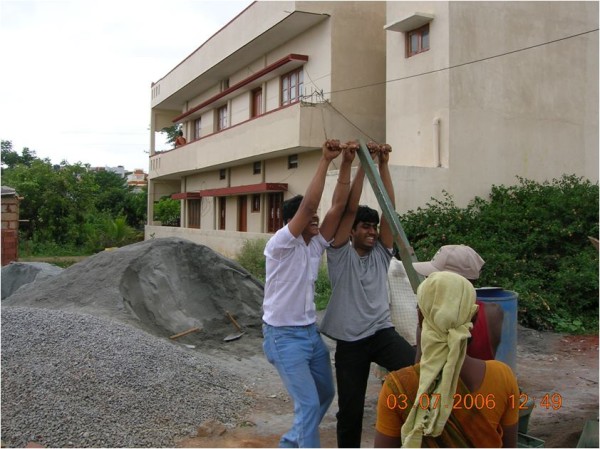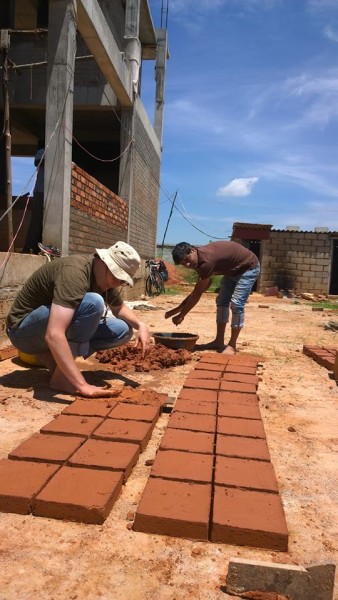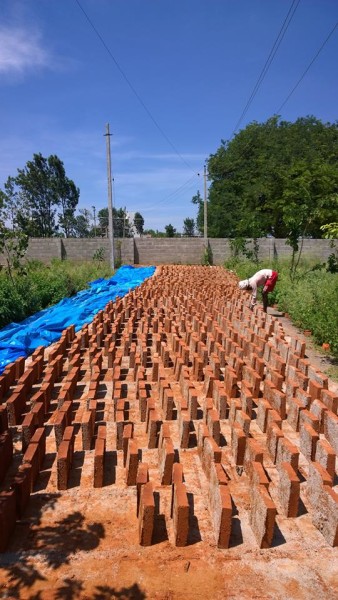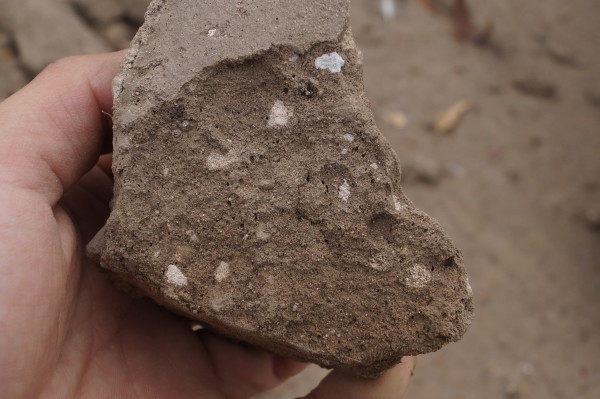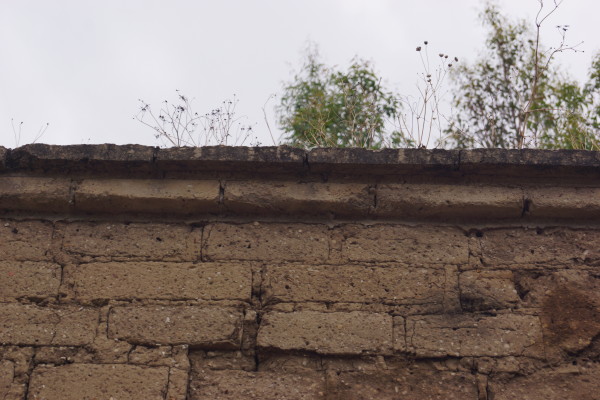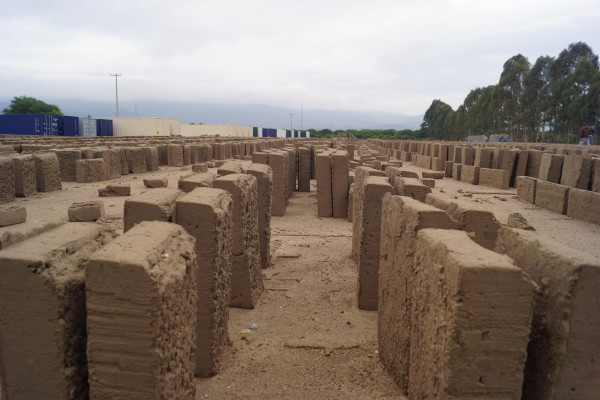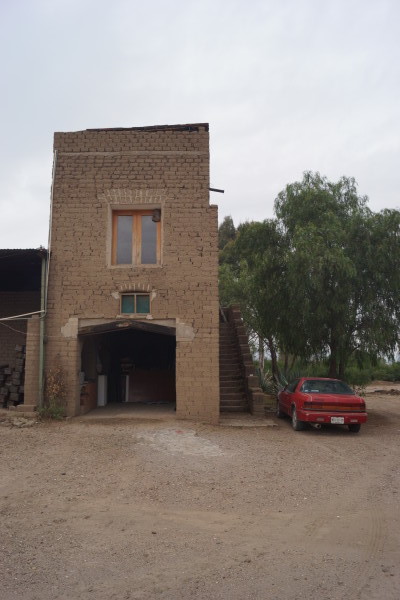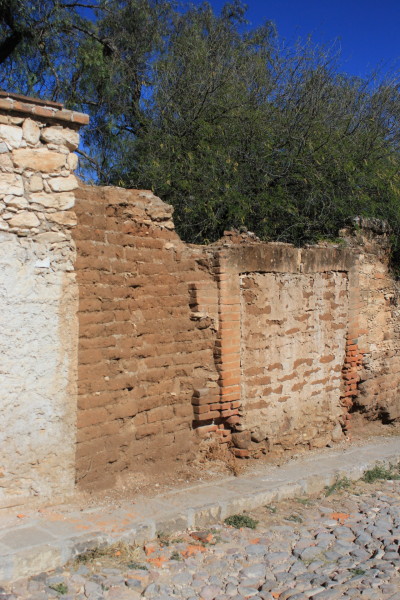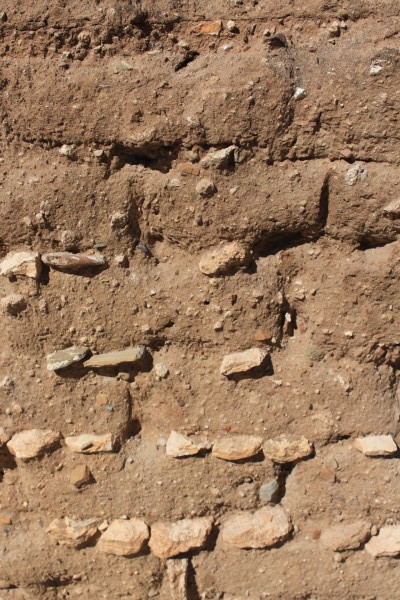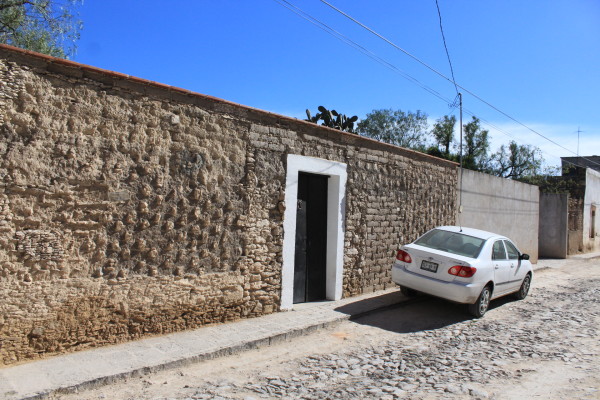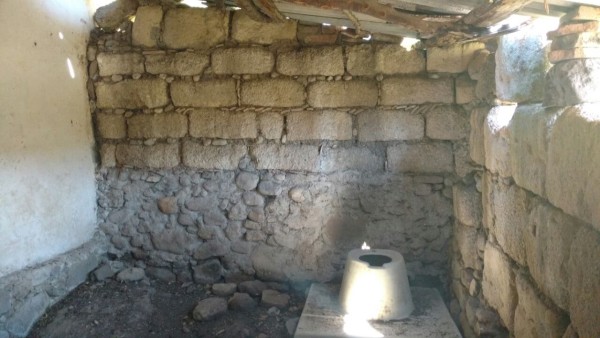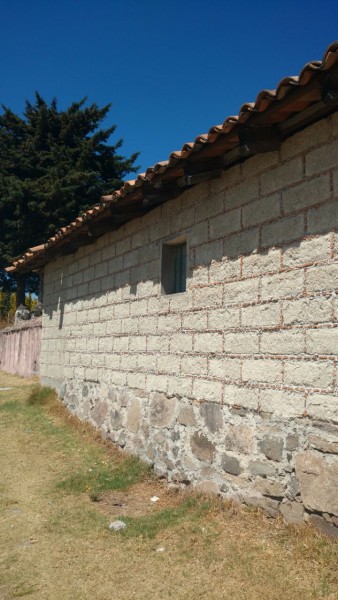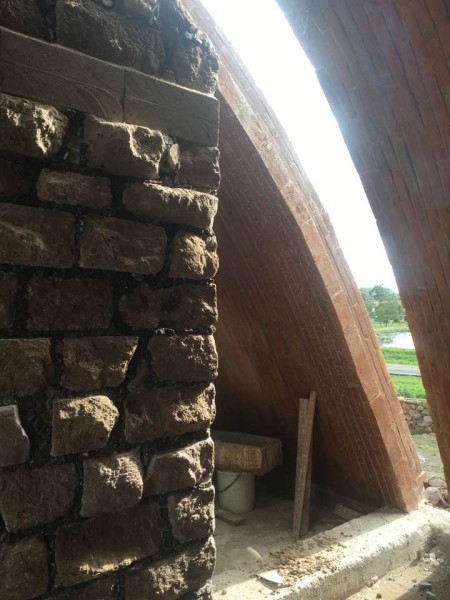Adobe + Cut Earth + Stone
CSEB (Compressed Stabilized Earth Blocks)
I first observed the use of mud bricks in 2005 at an internship while working with Ar.Chitra Vishwanath in Bangalore, India. Later in 2008-2009 at the Auroville earth Institute, UNESCO Chair for Earthen Architecture, Asia, Jeremie Gaudin (Madeinearth.in) and I investigated the barriers for the use of “compressed stabilized earthen blocks” (also called as CSEB / CEB). An earth cement block, manually / hydraulically compressed using a press, that required high capital investment to produce blocks for a small project. }ndpite of demand for a high-quality block, the lack of commercial producers in South India posed an opportunity to develop a franchise business that we called E-Block India. We worked on quality control, lowering of production costs and publicity while setting up an initial business plan of 6 production units, using local unemployed youth.
We failed miserably, as we overestimated demand. Architects and clients have lacked confidence in the material, lacked the know-how to design and use mud as a building material. I realized that a lot had to be done in diffusion, education and skill development before earth blocks as a material can have a chance to compete with mainstream building blocks.
Over time, I began to realize how I personally developed a distaste to CSEB, mainly because of its expressionless industrial plainness. Several promises have been made by the proponents of this modern technique, but it fails to keep up the promises. I also realized that the trend to look for “harder” building materials was driven by codes written for the cement industry. Earth was being understood by the modern world as a competition to cement.
Adobe
In 2012-13, I surveyed traditional fired brick makers in Tamilnadu and worked with several of them to develop adobes mainly for projects: Adityas Farmhouse, Siddappas House in Bangalore and then at Mana farms, in Hyderabad.
Several challenges were faced with retaining the team of adobe makers and eventually they had to be let go. Important lessons were learned – Adobe making needs to be taught to develop skill locally. The cost of making Adobes / CSEBs in an urban project would be prohibitively high because of the high training cost initially and the lower efficiency in adobe making.
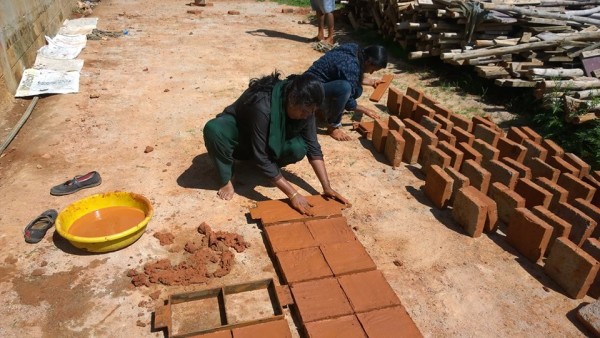
Over time, we learned to concepts of brick size, mixes and developing drying yards (sometimes blocking off a street).
Over the years I have developed a sound didactic, especially for the masters in sustainability program at Universidad Autonoma de Queretaro, Mexico. We studied local heritage / rural sites where we did several investigation projects on strength, durability, soil adaptability, aggregates, additives, fiber, sizes, methods of production.
We also studied the design of several vernacular buildings, the details associated with foundations, openings, coping and endings. The structural system of masonry was studied to better understand how adobe buildings work under seismic forces.
In the class of Bioclimatic design for undergraduate students of ITESM, Queretaro and the Master’s program of UAQ, Queretaro, we did secondary research on the hydrothermal properties of adobe buildings among other vernacular techniques of construction.
Cut Earth
In Mexico, since 2015, while modern architects have moved away from cut earth, the local cut earth (called sillar de tepetate) is still commonly used by villagers for both residential and agricultural utility buildings. Even foundations are built with this very strong and durable material. In the houses of Santiago Mezquititlan, Queretaro. A distinct rural architecture was seen, with incredible diversity and expression in the use of cut earth.
I started using cut earth in several projects in Mexico, especially due to its low cost and incredible hydrothermal properties. Here in the wall above, the discarded material from the quarries was used to create this feature wall separating the bathroom and a bedroom in casa Amealco.

